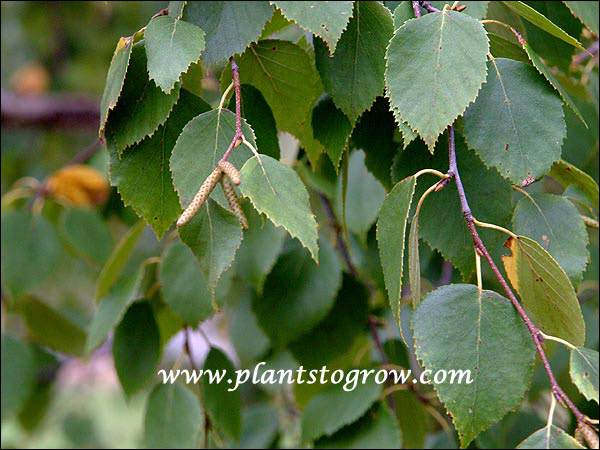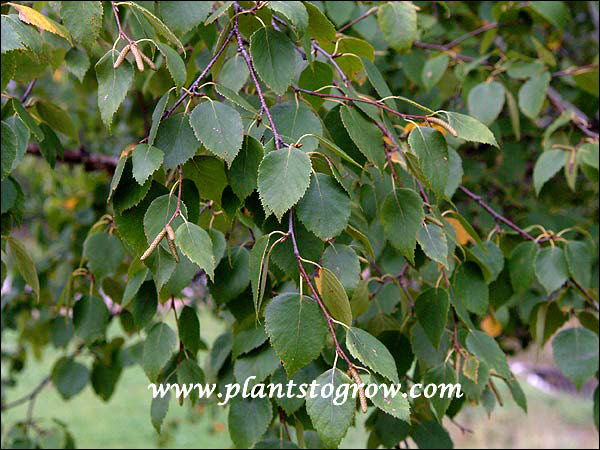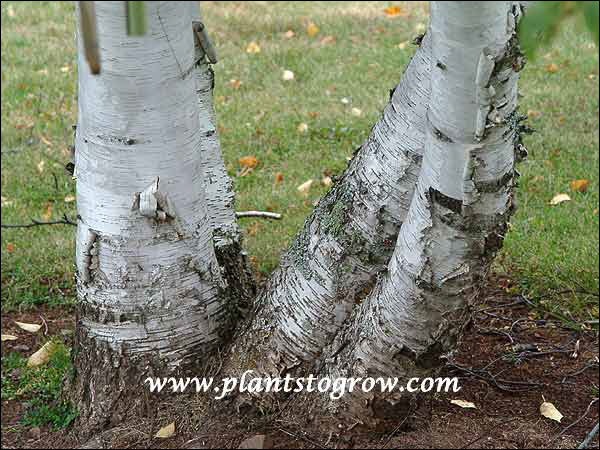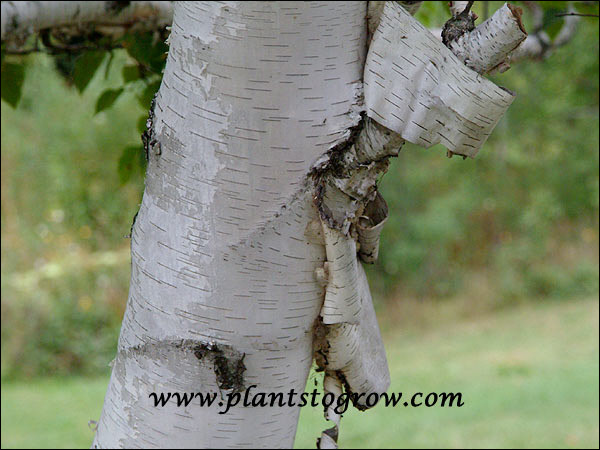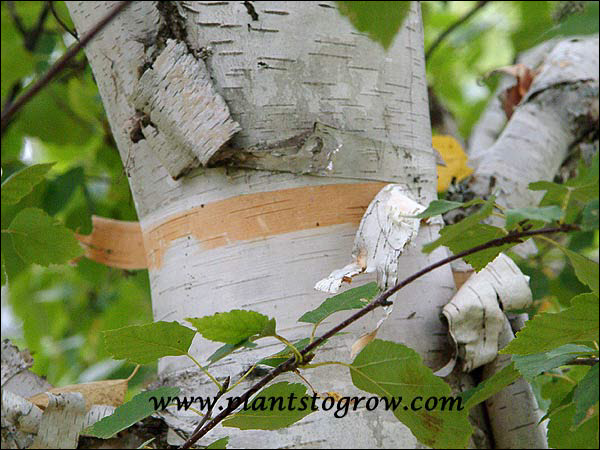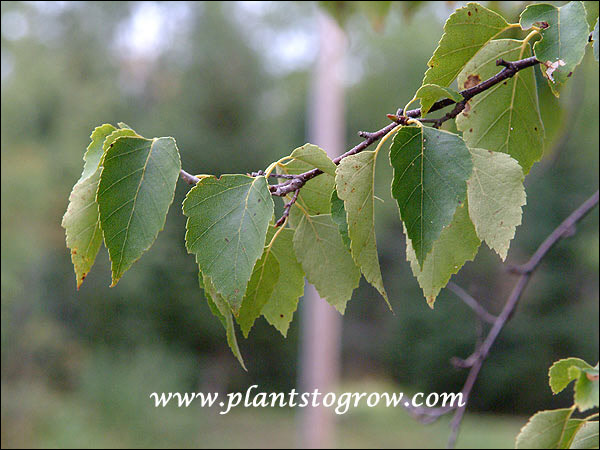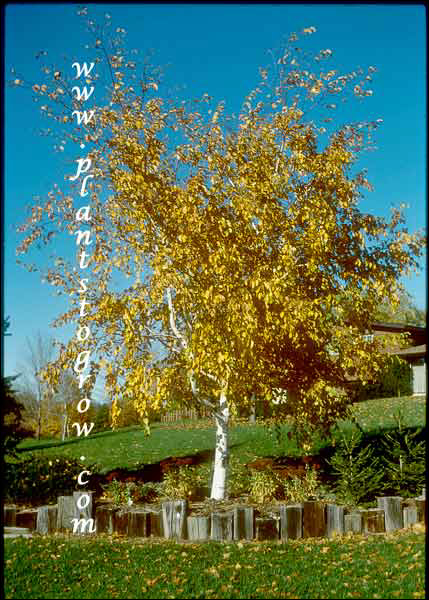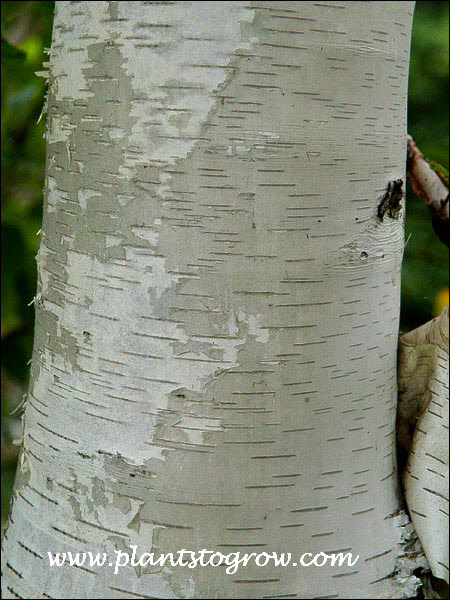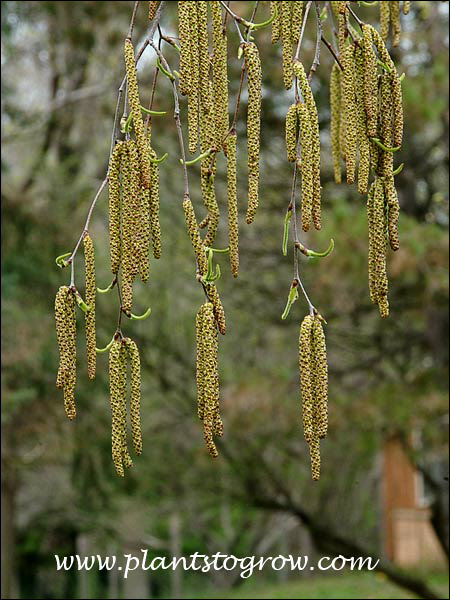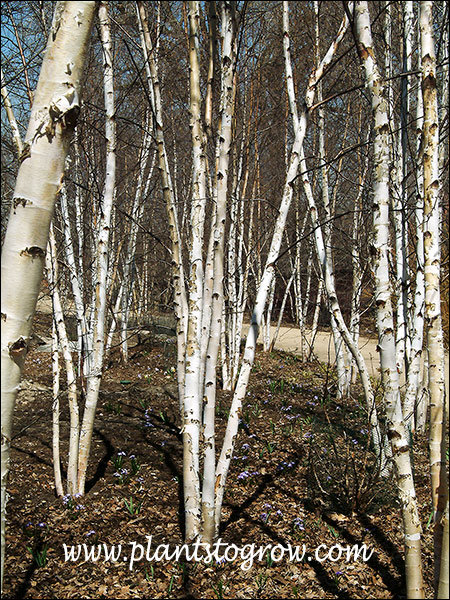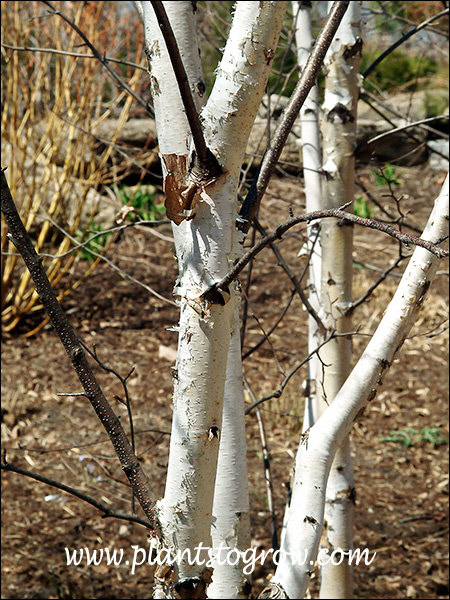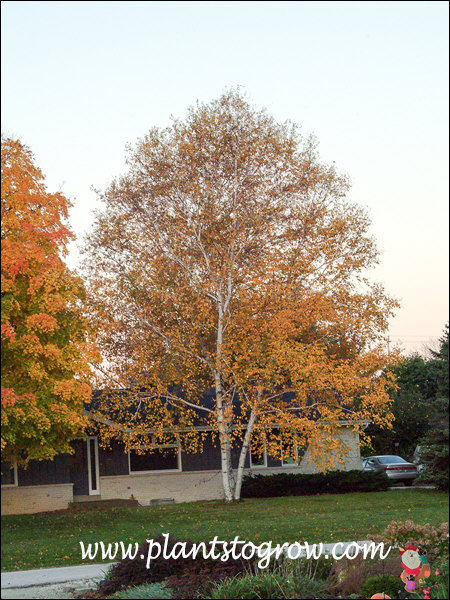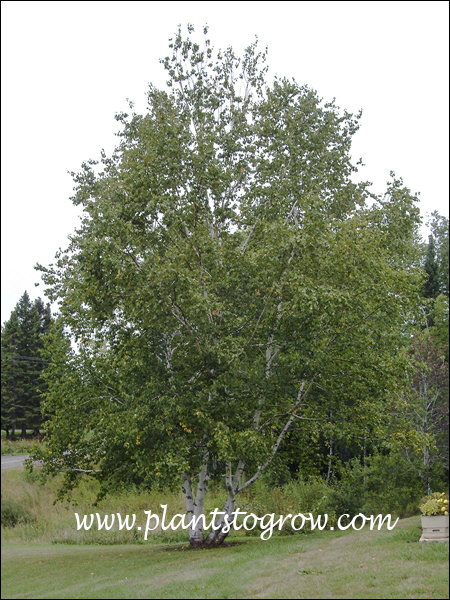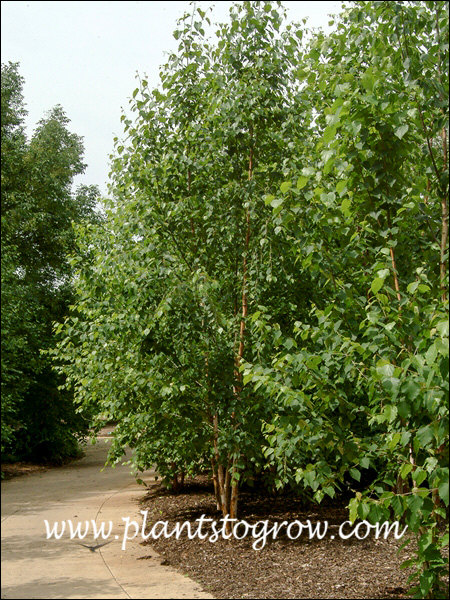| Description | Since the occurrence of the Bronze Birch Borer and the Birch Leaf Minor and the inability of this tree to tolerate the stresses of the urban environment, it is no longer as valuable as a urban landscape tree. Can be grown successfully in parks and estates where the growing requirements can be met. |
|---|---|
| Pronunciation | (Bet-u-lah)(pap-i-RiF-era) |
| Plant Type | All Plants, Trees Deciduous, Site author's observations |
| Hardiness Zone | 2-6 |
| Sunlight | full |
| Moisture | average to moist |
| Soil & Site | native to sand and gravely soils, does not tolerate heavy clay soils |
| Flowers | monoecious, having male and female flowers on the same plant, in the form catkins, wind pollinated |
| Fruit | nutlet found in the small, scaly, cone-like shaped structure |
| Leaves | simple, ovate, 2-3 inches long, coarsely serrated, upper surface dark green lower lighter, bright yellow in the fall, sharply pointed at apex and rounded at base |
| Stems | exfoliating bark, white and orange on inside, prominent lenticels |
| Dimensions | medium sized, 50-75, occasionally up to 90 feet, single or multiple stemmed |
| Propagation | seeds |
| Native Site | Native to the northern parts of the United States. A pioneer tree species in disturbed habitats. |
| Cultivar Origin | Introduced into cultivation in 1750. |
| Misc Facts | Used by the Chippewas to make bark canoes. The wood is light, strong and hard. Used for lumber veneers, pulp, etc. |
| Author's Notes | The area I grew up (Northern Wisconsin, USA) the Paper Birch was a common forest tree. We even transplanted a few out of the wild. One is still living today and is at least 60 years old. |
| Notes & Reference | #01-Manual of Woody Landscape Plants (Michael Dirr), #184-Michigan Trees (Burton V. Barnes, Warren H. Wagner), #181-Native Trees for North America (Guy Sternberg) |

Cart
